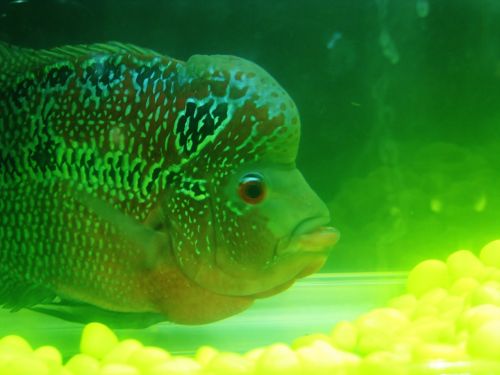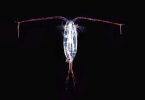Table of Contents
If you’re wondering why your fish tank turns green so fast, you’re not alone. Green water in aquariums is a common problem for many fish keepers, and it can be frustrating to deal with.
The green water is caused by an overgrowth of microscopic algae, which can make your tank look unsightly and harm your fish if it gets out of control.
There are several reasons why your fish tank may be turning green so fast. One of the most common causes is overfeeding your fish.
When you feed your fish too much, excess food can accumulate in the tank and create a nutrient-rich environment that encourages algae growth.
Another possible cause is too much light. Algae need light to grow, so if your tank is exposed to too much sunlight or artificial light, it can promote their growth.
Additionally, poor water quality can also contribute to the problem. If you don’t change the water in your tank regularly or if the filter is not working properly, it can create a buildup of waste and nutrients that algae thrive on.
Causes
If you’re wondering why your fish tank turns green so fast, there are a few common causes that you should be aware of. In this section, we’ll explore some of the most common reasons why your tank may be turning green.
Overfeeding
One of the most common causes of a green fish tank is overfeeding. When you feed your fish too much, the excess food can lead to an increase in nutrients in the water, which can cause algae to grow. This can quickly turn your tank water green.
To avoid overfeeding, make sure you’re only feeding your fish the amount they need. You can also try feeding them smaller meals throughout the day instead of one large meal.
This will help ensure that your fish are getting the nutrients they need without overloading your tank with excess food.
Excessive Light Exposure
Another common cause of a green fish tank is excessive light exposure. Algae need light to grow, so if your tank is getting too much light, it can quickly turn green. This is especially true if your tank is near a window or other source of natural light.
To prevent excessive light exposure, make sure your tank is not in direct sunlight and limit the amount of artificial light you use. You can also try reducing the amount of time your tank lights are on each day.
Lack of Maintenance
Finally, a lack of maintenance can also cause your fish tank to turn green. If you’re not regularly cleaning your tank and changing the water, excess nutrients can build up in the water, leading to an increase in algae growth.
To prevent this, make sure you’re regularly cleaning your tank, changing the water, and removing any excess debris or algae that may be growing.
You can also consider adding aquatic plants to your tank, which can help absorb excess nutrients and prevent algae growth.
By addressing these common causes of a green fish tank, you can help ensure that your tank stays clean, healthy, and free of excess algae growth.
Prevention
If you’re tired of dealing with a green fish tank, prevention is key. Here are a few preventative measures you can take to keep your fish tank clear and healthy.
Controlled Feeding
Overfeeding your fish can lead to excess waste and nutrient buildup in the tank, which can contribute to algae growth.
Make sure you’re feeding your fish the appropriate amount of food based on their size and species. You can also consider using an automatic feeder to ensure consistent feeding.
Proper Lighting
Algae thrives in the presence of light, so it’s important to provide your fish tank with the appropriate amount of light.
Too much light can cause excessive algae growth, while too little light can negatively impact your fish and plants. Consider using a timer to regulate the amount of light your tank receives each day.
Regular Maintenance
Regular maintenance is essential for preventing algae growth in your fish tank. This includes cleaning the tank, changing the water, and replacing the filter media on a regular basis.
You should also consider adding live plants to your tank, which can help absorb excess nutrients and compete with algae for resources.
By following these preventative measures, you can help keep your fish tank clear and healthy. Remember to monitor your tank regularly and adjust your maintenance routine as needed to keep algae growth under control.
Treatment
If your fish tank has turned green, there are a few treatments you can try to get rid of the algae. Below are some methods you can use to treat your green fish tank.
Water Changes
One of the easiest and most effective ways to treat a green fish tank is by changing the water. You should change about 25% of the water in your tank every week.
If your tank is already green, you can increase the frequency of water changes until the algae is under control. Be sure to use a water conditioner to remove any harmful chemicals from the tap water.
Algae Eaters
Adding algae-eating fish or invertebrates to your tank can help control the algae growth. Some popular algae-eating fish include plecos, otocinclus, and Siamese algae eaters.
Snails and shrimp are also good options. However, be careful not to overstock your tank with algae eaters, as they can produce waste that can contribute to the algae problem.
Chemical Treatments
If water changes and algae eaters do not work, you can try using chemical treatments to eliminate the algae. There are a variety of chemical treatments available, but be careful when using them as they can harm your fish and other aquatic life.
Follow the instructions on the label carefully and remove any activated carbon from your filter before adding the treatment. Some common chemical treatments include:
- Algaecides: These are chemicals that kill algae. They can be effective, but they can also harm your fish and other aquatic life if not used properly.
- UV Sterilizers: These use ultraviolet light to kill algae and other microorganisms. They are effective, but can be expensive.
- Phosphate Removers: These remove excess phosphates from the water, which can contribute to algae growth. They are usually safe for fish and other aquatic life, but can be expensive.
Remember, prevention is always better than cure. Regular maintenance, water changes, and proper feeding can help prevent algae growth in your fish tank.







